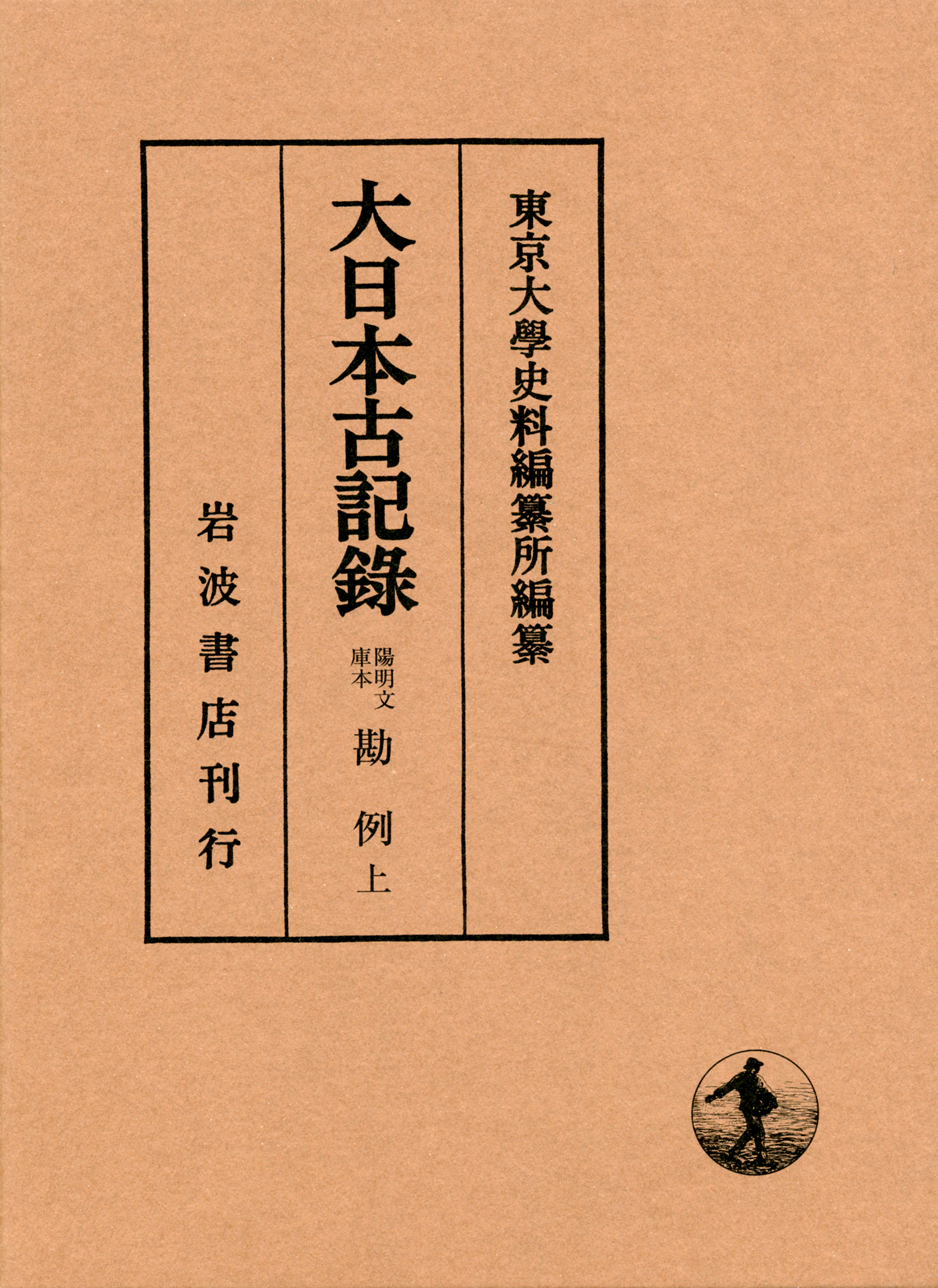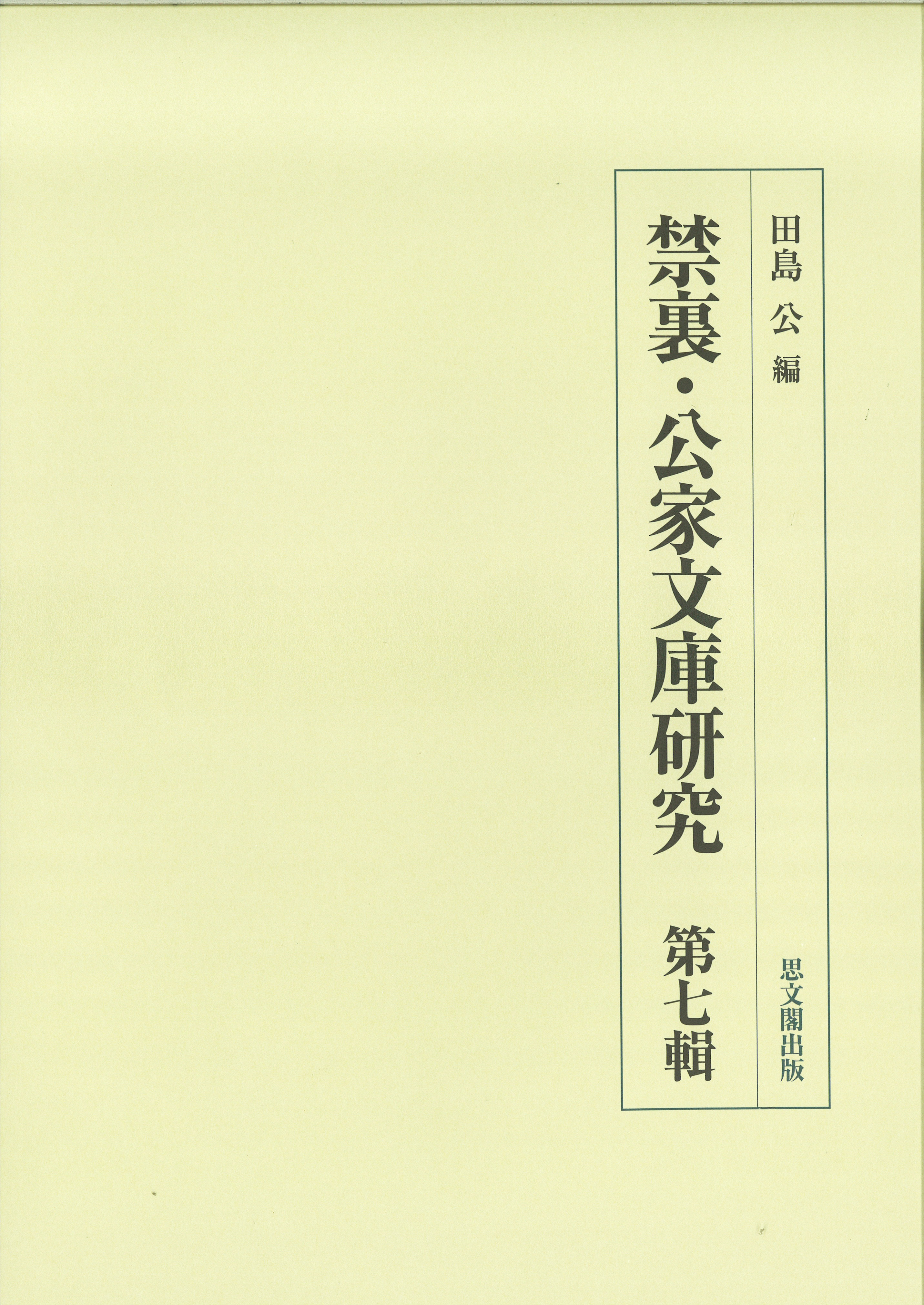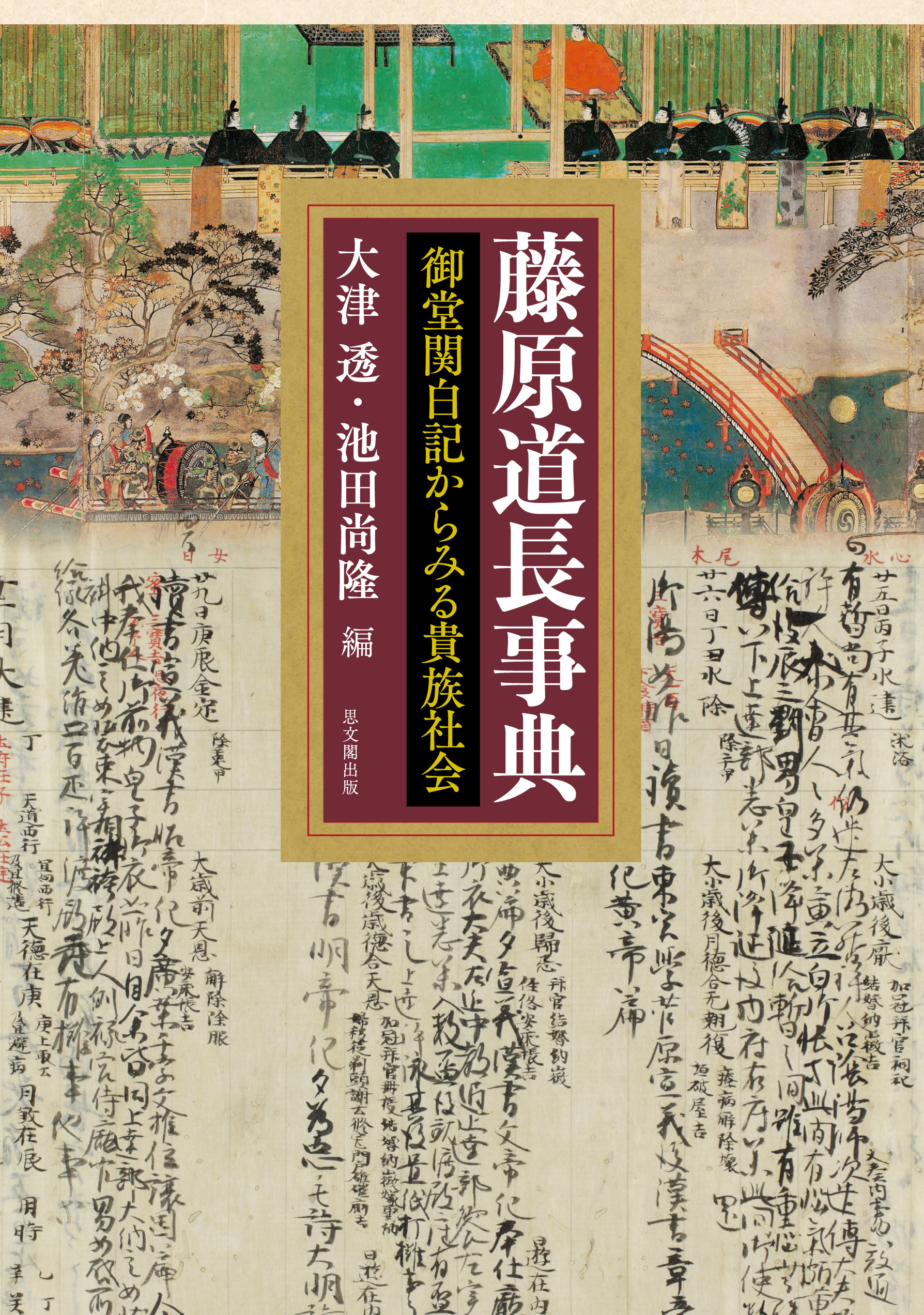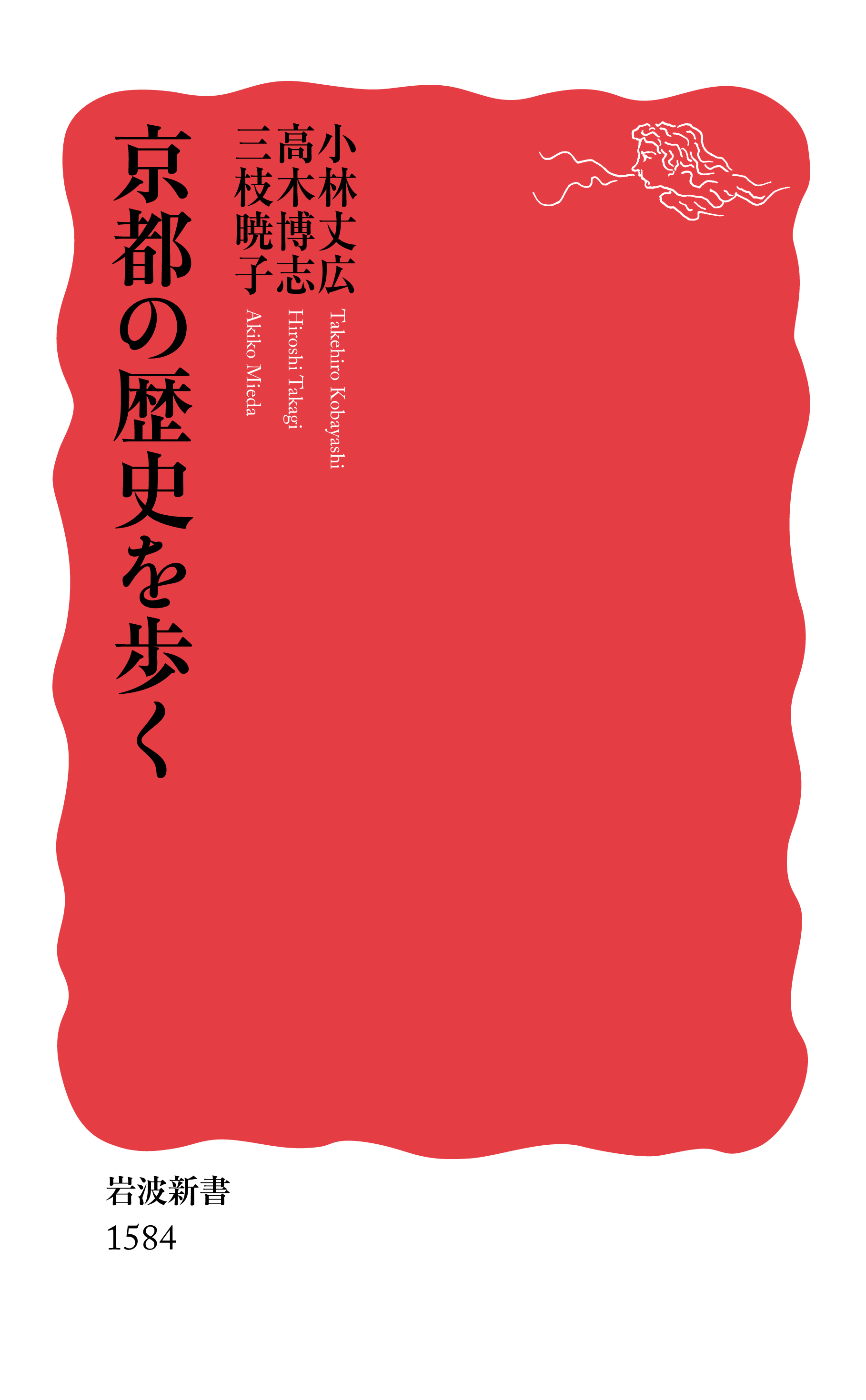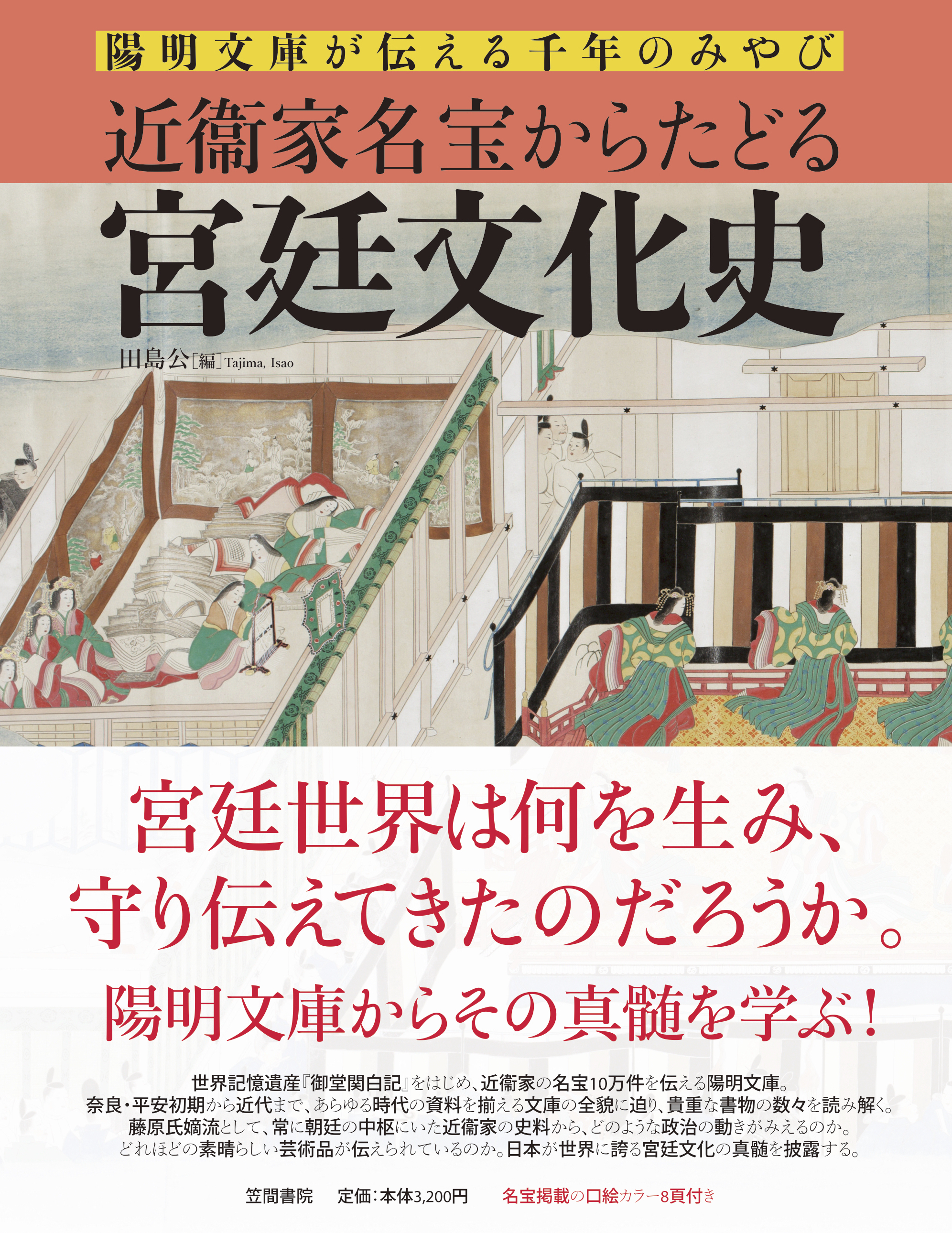
Title
Konoe-ke Meihou kara tadoru Kyutei-Bunka-shi (A History of Courtly Culture as Related by the Konoe Lineage Treasures: A Thousand Years of Elegance Transmitted by the Yōmei Bunko Archives)
Size
292 pages, B5 format, softcover
Language
Japanese
Released
April, 2016
ISBN
978-4-305-70802-1
Published by
Kasamashoin
Book Info
See Book Availability at Library
Japanese Page
Yōmei Bunko Archives is a unique repository of over 100,000 items of historical material dating from all periods between the Nara/Early Heian (8th-9th centuries) and modern times. The archives collection is based primarily on the books, documents, and works of art long held by the Konoe lineage, preeminent among the five regent lineages established during the Kamakura Period. Yōmei Bunko is located in Udano, in northwest Kyoto, not far from Sagano. Udano abuts Narabi ga Oka Hill, at the foot of which the famous Priest Kenkō lived, as well as the beautifully scenic Ninnaji Temple, famous for its omurozakura late-blooming cherry blossoms. The materials are stored chiefly in two structures located in a secluded area of Udano.
This volume was undertaken with the full cooperation of Yōmei Bunko. With Isao Tajima functioning as principal researcher and the University of Tokyo Historiographical Institute as research headquarters, Large-Scale Kakenhi Grants (namely, a 2007-2011 Grant-in-Aid for Creative Scientific Research, Archives Research and the Rejuvenation of Premodern Studies – Reconstructing Royal and Noble Archives and Clarifying Traditional Knowledge Systems, and a 2012-16 Grant-in-Aid for Scientific Research (S), Establishing the Foundations of Japanese Archives Studies and Expanding the Tools for Premodern Research) sustained the research that lay behind the public lecture series, “Lectures on Yōmei Bunko” that was inaugurated from January of 2011. Chapters in this volume are largely write-ups of those lectures.
The illustrations at the beginning of the volume display in color twelve of the finest of Yōmei Bunko’s treasures, including the Wakan shō (Wakan rōeishū, “Japanese and Chinese Poems to Sing”), said to be in the hand of Fujiwara Yukinari (972-1027). The volume contains roughly one hundred images throughout.
In Part I, essays by Osamu Nawa and Ken’ichi Yuyama discuss the history of the Konoe lineage and the formation and continuance of the archives. Keita Kita then takes up the topic of royal and aristocratic archives in the Early Modern period, with special attention to the historical connection between Yōmei Bunko and the Higashiyama Obunko Archives within the Kyoto Imperial Palace.
Part II is focused on the Midō Kanpaku ki of Fujiwara Michinaga (966-1027), which, in June 2013, was registered in the UNESCO Memory of the World Program for its status as the oldest existing diary in the world in the hand of a politician. Essays by Osamu Nawa, Hisashi Oboroya, and Fumihiko Gomi discuss from various angles the charms of the diary, the realities faced by its author while at the height of his power, and his connection to Sei Shōnagon.
In Part III, Yosuke Onoue introduces correspondence from famous individuals such as Taira no Kiyomori and Priest Shunkan that appear on the obverse pages of the Hyōhanki, the diary of Taira no Nobunori (1112-1187), steward of the Konoe House. Next, Keiko Hongō discusses the political conditions in the last years of the Northern and Southern Courts Period, as revealed by the Goshinshin-in Nikki (Gukanki) diary of Konoe no Michitsugu (1332-1387), ninth-generation head of the Konoe lineage. Jōji Fujii takes up the tumultuous lives of the sixteenth- and seventeenth-generation heads of the Konoe lineage, Sakihisa (1536-1612) and Nobutada (1565-1614), during the time of Oda Nobunaga and Toyotomi Hideyoshi.
In Part IV, Hiroyuki Shimatani addresses the famed calligraphic and artistic pieces held by Yōmei Bunko, including works by royal sovereigns, Konoe lineage heads, and other nobles. Hiromichi Yoshimura discusses the holdings of Chinese texts in their entirety. Akihiro Kinda reports on maps and diagrams, specifically his comparative research on the palace floor plan (kyūjō-zu) that appears in the Engi shiki Kujō House manuscript versus the palace floor plans (kyūjō-zu and daidairi-zu) that appear in the Higashiyama Obunko manuscript.
Last, in Part V, Tomohiko Nawa takes up operational aspects of Yōmei Bunko; Mariko Kasuya provides a logistical account of the Yōmei Bunko lectures; and Isao Tajima discusses how the digitization and increased accessibility of the Yōmei Bunko holdings will be a boon to research on Premodern Japan.
(Written by TAJIMA Isao, Professor, Historiographical Institute / 2018)



 Find a book
Find a book


